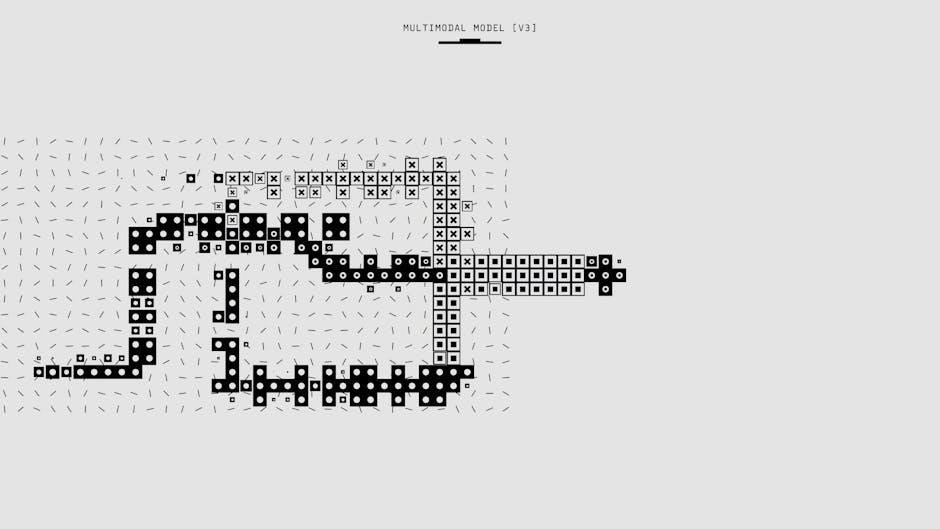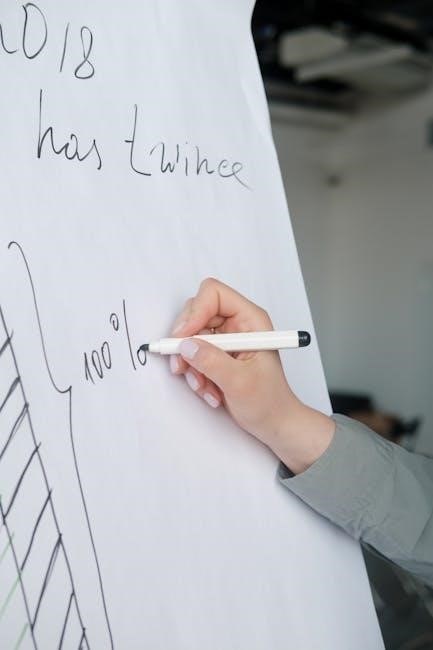Anchor charts are visual tools that help students recognize and organize text structures‚ enhancing comprehension. They provide clear definitions‚ signal words‚ and examples for various structures;
Definition and Purpose of Anchor Charts
Anchor charts are visual learning tools designed to help students identify and organize text structures. They provide clear definitions‚ key signal words‚ and examples for structures like cause-and-effect‚ compare-and-contrast‚ and chronological order. These charts serve as reference guides‚ displayed in classrooms to reinforce comprehension strategies and support independent reading. By breaking down complex concepts into manageable parts‚ anchor charts make learning interactive and accessible. Teachers use them to model thinking processes‚ ensuring students can apply these strategies across various texts. Their purpose is to enhance understanding‚ improve organization‚ and foster a deeper connection with the material being studied.
Importance of Visual Learning Tools in Education
Visual learning tools‚ such as anchor charts‚ play a crucial role in education by making complex concepts more accessible. They provide students with a clear‚ organized way to process information‚ which enhances retention and understanding. For visual learners‚ these tools are particularly effective‚ as they transform abstract ideas into tangible‚ easy-to-follow frameworks. Anchor charts also promote active learning by engaging students visually and encouraging them to connect new information with prior knowledge. By breaking down text structures into visually appealing components‚ these tools help students develop stronger organizational and critical-thinking skills. This approach supports diverse learning styles and fosters a more inclusive classroom environment.
Key Components of a Text Structure Anchor Chart
Anchor charts typically include clear definitions‚ signal words‚ visual examples‚ and interactive or printable versions to help students understand and identify text structures effectively.
Definitions of Common Text Structures
Common text structures include chronological order‚ cause and effect‚ problem and solution‚ compare and contrast‚ and description. Chronological order organizes events by time. Cause and effect explains relationships between actions and results. Problem and solution presents issues and resolutions. Compare and contrast highlights similarities and differences. Description provides details about a topic. These structures help students understand how information is organized in texts‚ improving comprehension and analysis skills. Anchor charts often include these definitions to serve as visual reminders for students‚ aiding in identifying and applying these structures across various texts.
Signal Words and Phrases for Each Structure
Signal words and phrases guide readers through text structures. For chronological order‚ words like “first‚” “next‚” and “then” indicate sequence. Cause and effect uses “because‚” “since‚” and “therefore.” Problem and solution often includes “problem‚” “solution‚” and “result.” Compare and contrast features “similarly‚” “however‚” and “on the other hand.” Description uses vivid language like “has” or “characterized by.” These cues help students identify the structure and follow the author’s message. Anchor charts highlight these signals‚ enabling students to recognize and apply them effectively in their reading and writing tasks‚ fostering deeper comprehension and analytical skills across various texts and genres.
Visual Examples and Illustrations
Visual examples and illustrations in anchor charts make complex text structures engaging and accessible. Bright colors‚ diagrams‚ and images help students connect abstract concepts to tangible visuals‚ enhancing retention. For instance‚ a cause-and-effect chart might use arrows to show relationships‚ while a compare-and-contrast chart could use Venn diagrams. Illustrations like timelines for chronological order or problem-solution flowcharts simplify understanding. These visual aids cater to diverse learning styles‚ ensuring all students can grasp the material. Many charts include reproducible versions‚ allowing students to create their own visual organizers. This combination of visuals and structured content reinforces learning‚ making anchor charts invaluable for teaching text structures effectively and creatively. They transform abstract ideas into memorable‚ interactive lessons.
Interactive and Printable Versions
Interactive and printable anchor charts offer flexibility for teachers and students. Printable versions allow easy distribution and use in notebooks or wall displays‚ while interactive versions enable digital engagement. Many charts are available as PDFs‚ featuring colorful designs and clear layouts. Some include editable fields for customization‚ letting teachers tailor content to specific lessons. Interactive versions may include drag-and-drop activities or clickable elements‚ making learning dynamic. These resources cater to different learning environments‚ whether in-class or remote. Printable charts are especially useful for hands-on activities‚ while interactive ones enhance digital classrooms. Together‚ they provide versatile tools for teaching text structures‚ ensuring accessibility and engagement for all learners. This adaptability makes anchor charts a valuable resource in modern education.

Types of Text Structures Covered
Anchor charts typically cover chronological order‚ cause and effect‚ problem and solution‚ compare and contrast‚ and description. These structures help students organize and understand text effectively.
Chronological Order
Chronological order refers to the arrangement of events in a time sequence. Anchor charts for this structure often include a timeline or flowchart to visually represent the progression of events. Key components include a clear definition‚ signal words like first‚ next‚ then‚ and finally‚ and examples of texts that follow this structure. These charts help students identify and organize events in a logical order‚ improving their ability to follow narratives and nonfiction texts. By highlighting temporal relationships‚ chronological order anchor charts make complex sequences easier to understand and analyze.
Cause and Effect
Cause and effect is a text structure that explains how events are related‚ where one event causes another. Anchor charts for this structure often use arrows or diagrams to show these relationships. They include signal words like because‚ therefore‚ and as a result‚ along with examples of cause-and-effect relationships. These visual aids help students identify the reasons behind events and their subsequent outcomes. By breaking down complex relationships into clear‚ organized sections‚ cause and effect anchor charts enhance students’ ability to understand and analyze causal connections in various texts‚ making this structure more accessible and engaging for learners.
Problem and Solution
Problem and solution is a common text structure where an issue is presented‚ followed by a resolution. Anchor charts for this structure often include examples of problems and their corresponding solutions‚ using signal words like problem‚ solution‚ and result. These charts help students identify how authors present conflicts and resolutions‚ enhancing comprehension. Visual elements‚ such as flowcharts or diagrams‚ can illustrate the relationship between the problem and its solution. By organizing information clearly‚ these charts enable students to better understand how texts address challenges and propose answers‚ making this structure more accessible and engaging for learners of all levels.

Compare and Contrast
Compare and contrast is a text structure used to highlight similarities and differences between two or more topics. Anchor charts for this structure often include signal words like similarly‚ however‚ and on the other hand. These charts provide clear definitions and examples‚ helping students identify how authors organize information to show relationships. Visual elements‚ such as Venn diagrams or T-charts‚ are commonly used to illustrate comparisons. By breaking down the structure‚ students can better understand how to analyze and evaluate information‚ making this tool invaluable for improving comprehension and critical thinking skills in the classroom.
Description
Description is a text structure that provides detailed information about a person‚ place‚ object‚ or idea. Anchor charts for description often include signal words like has‚ features‚ and characteristics. These charts help students recognize how authors use vivid language to create mental images. Visual elements‚ such as diagrams or illustrations‚ are often incorporated to enhance understanding. By breaking down the structure‚ students can identify key details and main ideas‚ improving their ability to visualize and interpret descriptive texts effectively in the classroom.

Using Anchor Charts in the Classroom

Anchor charts are displayed as wall displays or used interactively/printable versions. They help students reference text structures‚ signal words‚ and examples‚ reinforcing learning and engagement.
Displaying Charts as Wall Displays
Displaying anchor charts as wall displays in the classroom creates a visually engaging and accessible reference for students. Charts are often brightly colored and feature cheerful illustrations to captivate young learners. Teachers strategically place them near reading or writing areas for quick access. These displays serve as constant reminders of key text structures‚ signal words‚ and examples. Students can easily glance at the charts during lessons or independent work‚ reinforcing their understanding of concepts like chronological order‚ cause and effect‚ and compare and contrast. This visual approach helps students connect new material to previously learned structures‚ fostering better comprehension and organizational skills. Interactive or printable versions can also be incorporated into these displays‚ making them dynamic and adaptable to different learning needs.
Integrating with Graphic Organizers
Combining anchor charts with graphic organizers enhances students’ ability to visually connect text structures with hands-on activities. Graphic organizers‚ such as Venn diagrams or cause-and-effect charts‚ provide structured templates for students to apply their knowledge of text structures. For example‚ a compare-and-contrast organizer can align with an anchor chart highlighting key signal words like “similarly” or “on the other hand.” This integration allows students to map out ideas and relationships‚ reinforcing their understanding of how authors organize information. Printable versions of these organizers are often paired with anchor charts‚ offering a seamless transition from instruction to independent practice. This dual approach supports critical thinking and organizational skills‚ making complex concepts more accessible.

Reinforcing Reading Comprehension Strategies
Anchor charts play a vital role in reinforcing reading comprehension strategies by providing students with a visual reference for identifying text structures. These charts help students recognize organizational patterns‚ such as cause-and-effect or compare-and-contrast‚ which are crucial for understanding complex texts. By highlighting key signal words and phrases‚ anchor charts enable students to pinpoint transitions and relationships within a text. This visual reinforcement supports close reading and the ability to identify main ideas and supporting details. Interactive versions of these charts further engage students‚ encouraging active participation in analyzing and interpreting texts. Over time‚ this consistent exposure improves students’ ability to apply comprehension strategies independently across various genres and subjects.
Benefits for Students
Anchor charts enhance students’ reading comprehension‚ organizational skills‚ and engagement. They provide visual cues‚ aiding in identifying text structures and improving overall academic performance effectively.
Improved Reading Comprehension
Anchor charts significantly improve reading comprehension by helping students recognize and organize text structures. They provide clear definitions and visual examples‚ making abstract concepts more tangible. By highlighting signal words associated with each structure‚ these charts enable students to identify patterns in texts‚ such as cause and effect or chronological order. This increased awareness allows students to better understand the author’s message and retain information more effectively. Regular use of anchor charts fosters a deeper engagement with texts‚ leading to improved overall reading skills and academic performance.
Enhanced Organizational Skills
Anchor charts play a crucial role in enhancing students’ organizational skills by providing a structured framework for understanding text structures. These charts visually break down complex information‚ helping students categorize details effectively. By associating signal words with specific structures‚ students learn to identify and group ideas logically. This structured approach not only improves their ability to follow textual organization but also transfers to other areas of learning‚ such as writing and note-taking. Over time‚ students develop better habits in managing information‚ leading to more coherent and organized academic work.
Increased Engagement with Text
Anchor charts significantly boost students’ engagement with text by making learning interactive and visually appealing. Colorful illustrations‚ clear examples‚ and organized layouts capture students’ attention‚ fostering a deeper connection to the material. Interactive versions of these charts‚ such as sorting activities or graphic organizers‚ encourage hands-on participation‚ turning passive learning into an active experience. This interactivity helps students feel more involved in their learning process‚ leading to heightened interest and motivation. Additionally‚ the use of signal words and phrases in charts helps students identify text structures quickly‚ making reading feel more manageable and exciting. This engagement translates to a more dynamic and enjoyable learning environment.
Creating Your Own Anchor Chart
Design visually appealing charts using free templates‚ vibrant colors‚ and clear illustrations. Organize content logically‚ incorporating definitions and examples to aid comprehension and student engagement.
Design Tips for Visual Appeal
Creating an effective anchor chart begins with a balanced layout and large‚ easy-to-read fonts. Use vibrant colors and high-quality images to capture attention. Incorporate icons or illustrations to visually represent each text structure‚ making the content more engaging. Ensure ample white space to avoid overcrowding‚ enhancing readability. For digital charts‚ utilize tools like Canva or PowerPoint to add animations or interactive elements. Consistency in design across all sections helps maintain a professional look. Consider adding color-coded sections for different text structures to improve organization. Finally‚ include real-world examples and clear definitions to make the chart both informative and visually appealing for students.

Free Resources and Templates
Discover a variety of free anchor chart resources and templates available online. Websites like Teachers Pay Teachers and Scholastic offer downloadable PDFs for text structure anchor charts. These resources often include printable versions‚ graphic organizers‚ and interactive designs. Many templates are customizable to suit different grade levels and teaching styles. Bloggers and educators share creative ideas and ready-to-use charts for structures like compare and contrast‚ cause and effect‚ and chronological order. Platforms like Pinterest also provide visual inspiration and downloadable materials. Whether you prefer digital or physical charts‚ these free resources make it easy to create engaging and effective tools for your classroom‚ saving you time and effort.


